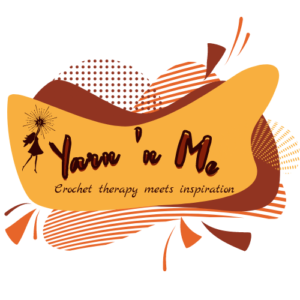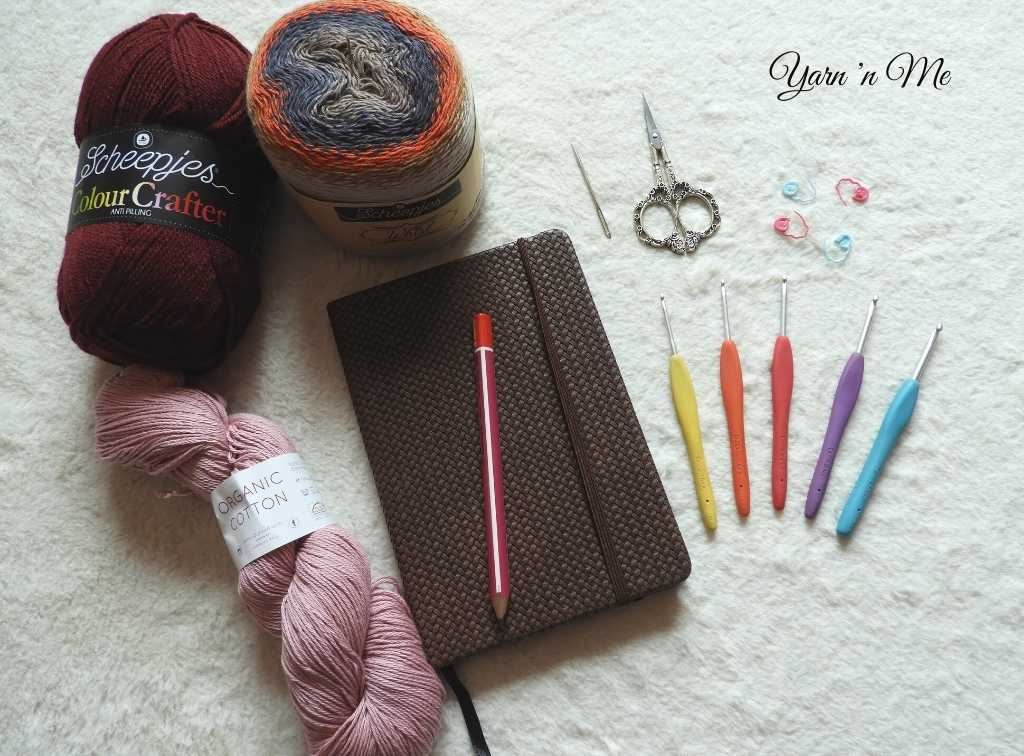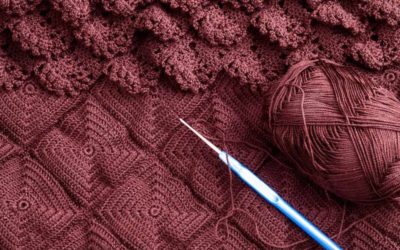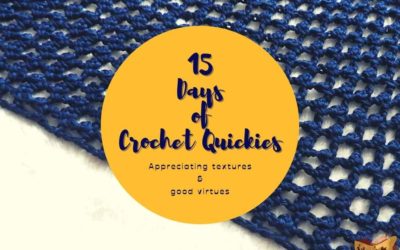Crochet is a craft that involves a wide variety of tools and accessories. Whether you are a newbie or a pro in the artform, a few of these accessories alone, in the entire list can overwhelm you with its wide design, types and varieties, let alone the entire list. If you have just picked up crochet or have been crocheting for a while now, this feeling can be extraordinarily strong. This article gives you an extensive details on all the tools to crochet and what you will need at every stage.
If you are brand new to crocheting, you might want to check the benefits of crocheting before get into it full-fledged.
In this post, I will guide you through a list of almost all of the crochet accessories, what you will need, where you can save, where you can explore and splurge and all those sorts of stuff. I share in here all my experiences of crochet accessories. This article is to help predominantly the novices and advanced beginners through their crochet journey. Experts might find it kind of vague but stick around to see if you can take away something.
Disclaimer: This post is entirely based on my experience and preferences and some of the opinions given here might differ from person to person. Use this post and a guide or starting point and decide what is good and works for you.
1. Yarn
Well, it is pretty obvious that crochet is a fibre art and you will need yarn to pursue this hobby. Out there, when you go for yarn shopping, be it to start taking up crochet or for one of your first projects, the choices you will be put up to is overwhelming. You might even be tempted by those colourful, lustrous, and textured yarns that you end up buying the wrong type for what you had intended. There are wide varieties of yarn based on their material, weight, texture, and colour.
When you are just getting into crochet, an 8-ply/dk weight yarn or 12ply/worsted weight yarn in solid colour preferably a decent quality acrylic is highly recommended. When you are looking out for yarns for one of your first projects, select your yarn based on the following criteria
- What is the project you intend to make? A scarf, a blanket, décor piece, etc.,
- Which weather it going to be used? For instance, we wouldn’t want to wear a scarf made from wool in Singapore’s humidity.
- What is the final product intended to use? Is it going to be a baby product that requires frequent washing, a dainty scarf or in the kitchen?
The choice of yarn – material, texture, weight, and colour, depends majorly on these three questions as various yarns are meant to different usages. So, we ought to choose our yarn according to our projects.
2. Crochet Hooks
Like yarns, crochet hooks also come in endless options from economic to high-end ones. It is the most important tool to crochet. But it is different from yarns in a way that, it is a constant while yarns are variables from project to project. It can be put in this way, it is the magic wand of every crocheter, if I am not exaggerating. So, choosing the right kind of crochet hook is of vital importance. It is an investment, trust me. Good quality crochet hooks can prevent several complications. So, choose wisely.
There are several types from budget friendly basic aluminium hooks from brands like Boye and Susan Bates, to mid-range ergonomic hooks from brands like Tulip and Clover, all the way to high-end handcrafted hooks from brands like Furls. They usually come in an entire set and you are quite saving some cash when you get them as a set.
Crochet hook for beginner
While you are just starting out only one crochet hook in one size, preferably 5mm or 6mm basic aluminium, based on the weight of the yarn, would suffice. Once you get hang of the stitches and are ready to make an investment in your hobby, start by trying one hook at a time. See how your hold is, ease of crocheting, etc., If you are not sure, just a single hook from a couple more designs and see. It is totally okay to take your time and make decision unless you like to hoard and collect crochet hooks.
Crochet hook for consistent crocheters
If you intend to crochet consistently for long hours, ergonomic hooks are highly preferable, Clover has two kinds of ergonomic hooks. I love their Amore series and own two sets one in each of their steel hooks (small sized hooks below 2mm) and their aluminium hooks (2mm to 6mm). It is the perfect hook for my pencil-hold style. Tulip has a good set of ergonomic hooks; I feel it more suited to people to do not tend to rotate and slide their hooks while crocheting. I’m eyeing on the Furls streamline crochet hooks now and hoping to get my hands on them soon.
So, these two things are of utmost importance, and you cannot crochet without one or the other. The other items are truly accessories that sort of make your life easier, not that you need all of them. Each of them has a purpose and the decision rests in you if you need them or not.
3. Scissors
Well, its kind of obvious isn’t it? You will have to snip of the yarn at the end to finish the project, for which you need a pair of scissors. There are so many fancy scissors in the market from basic craft scissors to beautiful unicorn themed ones. Choose one that is sharp, rather embroidery scissors, and handy to use, so that you will have smooth snipping of yarn. Handy and sharp scissors also come handy while trimming tassels and pompoms.
On a side note, if you like to carry your projects on board, a pendant shaped yarn snipper from Clover might come handy. It is a brilliant item, that you could wear it as pendant on its own. Once, I had a bitter experience of sacrificing my beautiful unicorn themed scissors at the immigration check. I had carried it accidentally in my purse.
4. Stitch markers
This is one accessory that is meant to be used for one purpose, to mark stitches as the name suggests, but can be used for a couple more purposes.
It can be used in the working loop of yarn when you leave your project aside midway. This prevents the unraveling of stitches.
It also comes in handy when you must count many foundation chains or stitches. You can mark the stitches at every small number of stitches, say every ten stitches, and it will make it easy for you to keep track of the total number of stitches.
There are predominantly two types of stitch markers used in crochet projects- split ring type, that slides into your stitches and locking type that is literally like safety pin mechanism. I personally prefer a ring-like stitch marker from ‘Boye’ that can be literally used like a both – split ring and locking stitch markers.
All that being said, you can get creative with your stitch markers. Small everyday items like safety pins, paper clips, bobby pins, etc., can also be used as stitch markers.
5. Yarn Needle
Yarn needle is a blunt tip needle that is used to sew together crochet pieces or weave in the ends of your project. It is also referred to as tapestry needle or darning needle. It comes predominantly in three materials: plastic, aluminium, and steel and in different sizes. We ought to use one according to the yarn weight.
For beginners, you can start with plastic needles. Later you can get something in pack of three sizes that can be used from lace yarns to worsted weight yarns. There is one other type of yarn needle that has a flexible eye. This can be used for yarn weights from dk all the to bulky weights. I settled down with a set of steel needles and a pair of aluminium needles, both from Clover, as I predominantly use yarns up to worsted weight and rarely heavier.
6. Measuring tape
Measuring tape helps when you will have to measure up your project to a specific dimension, like scarf, wearables, and home décor pieces like cushion case. This is required when you start making big projects, for advanced beginners perhaps. It is up-to one’s taste and preferences to keep this basic to the plain old folding tape measure or fancy up to retractable ones with designs. I still use the former, but the latter is handier and more convenient.
7. Notebook and Pen
While crocheting, you might want to note down something – stuff like patterns, stitches, etc., It is also a good idea to keep track of all the projects you do, with emphasis on the yarn and hook size used. Even some beginners, if not all, might need a notebook. I literally taught someone to crochet who took notes on the basic stitches. (Appreciate her enthusiasm and involvement).
To keep track of your inventories and projects, there are several crochet journals. But for me, I find a simple blank notebook sufficient to take notes on my designs. In fact, I find using a pencil more comfortable than a pen as I scribble down notes. So, decide on the what kind of notebook is exciting for you.
8. Blocking mats and pins
Blocking, on itself is a separate topic to discuss. In a nutshell, it is setting your crochet works in place to keep its shape and intended size. You will require blocking mats and pins to keep your work in place. To block your project, you will have to spread your finished work on to the board wet/dry, pin it down in shape using the blocking pins and we then lightly by spraying water if pinned dry.
Honestly, I do not own any ‘blocking boards and blocking pins.’ But I do have kids play mats and some notice board pins that gets the job done for me satisfactorily. And guess what, all these materials were purchased from Daiso Japan, Singapore, which is like the Dollar Tree. Just make sure that sure pins are rust-proof. But I would soon make an investment on the blocking pins from KnitPro.
9. Tassel and Pompom maker
There are tiny tools to make tassels and pompoms. Investing on these tools is not necessary as a beginner. When you amp up your crochet game you can consider based on your project preferences
10. Gauge tools
There are various designs of gauge tools to check both your hook gauge and swatch gauge. Honestly, I never found the need of either of them because
- I check my swatch gauge using measuring tape
- I never felt the need for hook gauge as all the hook sizes are engraved in respective hooks
11. Row counter
A tiny tool to keep track of the number of rows you are working. I own a basic one but never got to use it. We could as well get away with stitch markers for the purpose
12. Yarn winder
As the name suggests, yarn winder is used to wind yarns. It comes to use if you have a lot of yarn leftovers to organize or you use a lot of yarns in hanks. I would highly recommend you invest in a good quality one, if you are investing. Because, I bought a cheaper one online and it wasn’t doing its job from day one. I still do not own one as I wind my leftover yarns into balls. But I might invest on one as I am planning to use hanks in the future.
13. Yarn bowl
Yarn bowl is a small bowl with an indent on a side where you keep your yarn ball or cake while crocheting. This is purely a décor piece I feel as you can get the job done with regular bowls or small baskets.
14. Project bag
Project bag is a specialized bag that is designed to keep all your crochet materials making it easy to carry it from one place to another. It has compartments to keep your hook, other accessories, and yarns. It is exclusively designed for this purpose. It comes to use when you travel and camp quite a lot and usually for larger projects.
15. My other accessories and tools to crochet (unexpected ones)
Alright guys! I have a confession to make here. I have two other things in my vanity that I use quite regularly while I crochet, and you might find it useful as well. It is sort of my tip to you. Those two things are a lighter and adhesive sports for fingers.
I crochet quite a lot of bags and purses using polyester yarn meant solely for bags. It is a sort of slippery and unwind and slip away on cutting and weaving in the ends. So, it is a good idea to use a lighter to keep the strands from unravelling and intact after weaving in.
When crocheting for a long time, some yarns tend to make an indent while sliding on your finger. To prevent that I use adhesive sports take on my finger and voila, no more pain.
So, my friends, this is my list of crochet accessories and my take on its requirements. And now, just contemplate on the list and prioritize your needs. At the end of the day, we all must crochet for the sheer joy of it. Do not let this list overwhelm you to take away the fun. Just remember, crochet and the flanking fun comes first. Happy crocheting!!!
Join my Facebook group Yarn ‘n Me makers for more fun content and interaction.
Visit My Ravelry Store to get the print-friendly versions of all my patterns






I enjoyed and am taking new knowledge and reminders from your accessories list. I’d say you covered things precisely Raji.
Happy Tuesday!
Renée
Hello Renee,
Glad it was useful to you. Happy crocheting!
This article is so well written and comprehensive.., quite a few interesting new finds even for a crocheter who has been doing it for a few years 😊